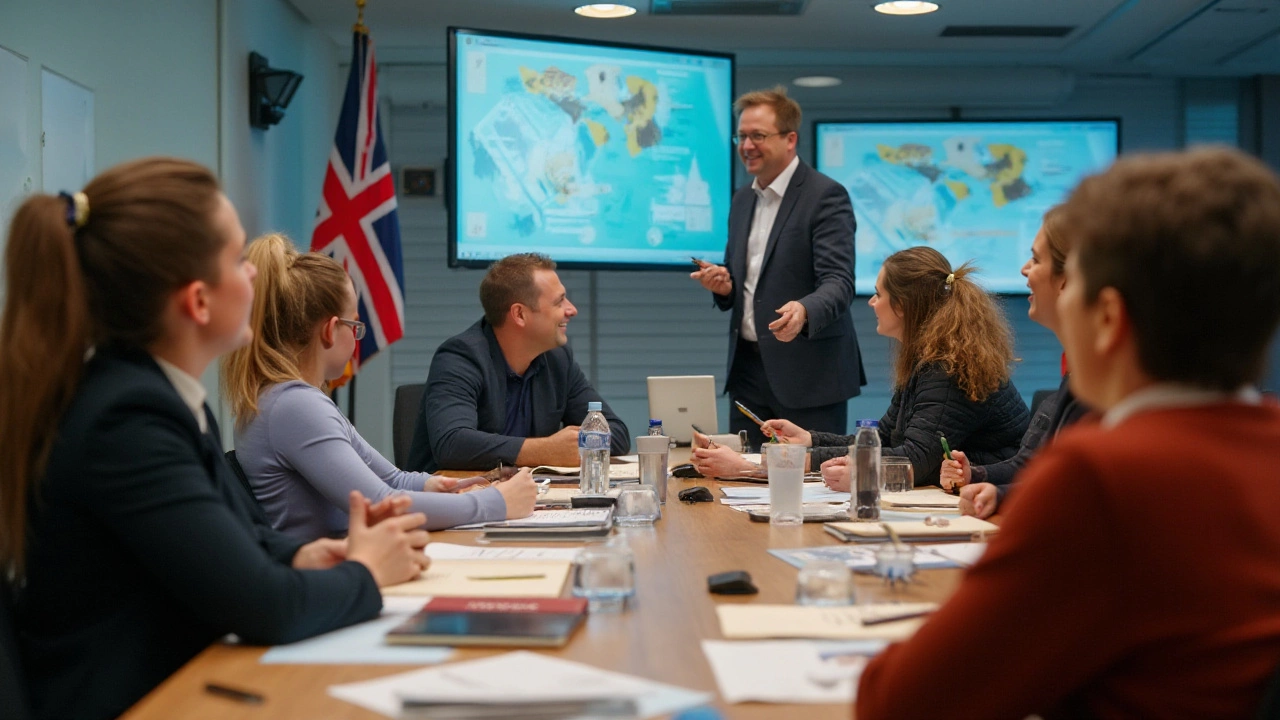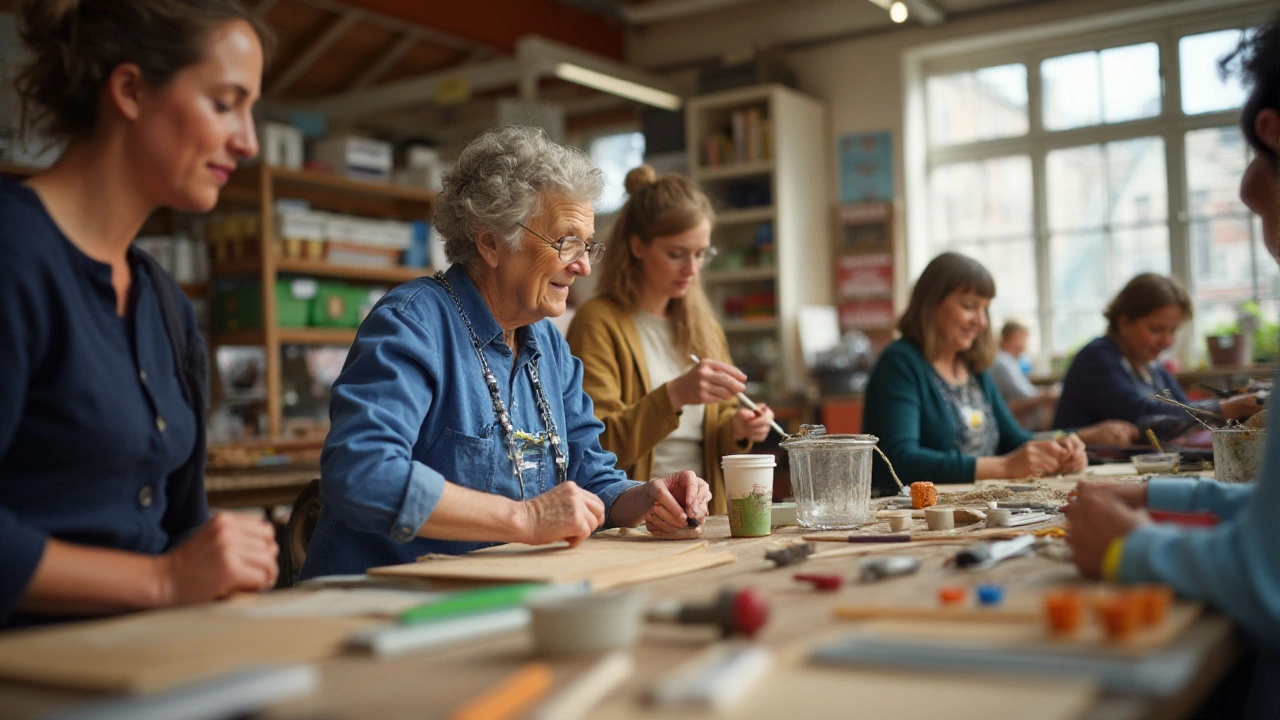Have you ever wondered why some learning experiences stick with you while others fade away? It's often because the most effective learning occurs not just in traditional classrooms, but through a mixture of experiences, interactions, and formal education. This is the essence of the 70 20 10 adult learning theory.
Imagine the workplace as your playground. Here, 70% of your learning stems from on-the-job experiences—those real-life challenges and tasks that push you to grow. Another 20% comes from connecting with peers, mentors, and colleagues who pass on valuable insights through discussion and collaboration. Finally, the remaining 10% is acquired through structured educational settings, such as workshops or courses. Together, they form a dynamic trio that fosters continuous growth and adaptation.
- Introduction to the 70 20 10 Model
- The Importance of Experience in Learning
- Social Learning and Its Impact
- The Role of Formal Education
- Implementing the 70 20 10 Strategy
Introduction to the 70 20 10 Model
The 70 20 10 model is a powerful framework that has transformed how we think about adult learning and development. Developed in the 1980s by the Center for Creative Leadership, this model is based on the observation that adult learning is most effective when it encompasses a balance of experiences, interactions, and education. The intuitive premise here is simple: learning doesn't just happen when you sit in a classroom. It's a blend of real-life experiences, social interactions, and formal lessons that culminate to form a comprehensive learning journey. The model allocates 70% of learning to practical experiences, 20% to learning from others, and only 10% to conventional educational environments. These statistics highlight the importance of engaging in tasks directly related to our goals.
Consider the workplace—the crucible of adult learning—as the perfect arena for the 70 20 10 model. Each day presents countless opportunities for hands-on learning, from solving real-world crisis situations to triumphing over the daily challenges that naturally arise. These experiences shape our knowledge and skills. Studies indicate that adults retain more knowledge when they acquire it through direct application. For instance, a project that requires collaboration and problem-solving can teach more than a lecture ever will. And don't underestimate the significance of the remaining 20%: learning from peers is equally pivotal. Surrounded by fellow professionals, individuals absorb strategies, expertise, and understanding through active engagement.
The model also emphasizes that only 10% of learning occurs through formal education, such as workshops and courses. While it may seem a small percentage, this structured learning offers essential groundwork. Without the solid base provided by this 10%, the other components wouldn't be as effective. Renowned leadership expert, John Doe, once remarked,
"The true art of learning involves weaving experiences, guidance, and teachings into an unbreakable tapestry."Indeed, these three elements—experience, social learning, and structured education—are symbiotic elements that coalesce to form an impactful learning experience. Understanding this model can significantly enhance how we approach skill development, ensuring we utilize our environments and networks effectively.
A fascinating realization is how the 70 20 10 model aligns with our everyday interactions—we have been participating in this form of learning unwittingly. Even in social settings outside the workplace, such as casual meetups or community events, adults are learning constantly. The flexible nature of the model means it adapts well to different scenarios, making it universal in its application. The metrics within the model are not rigid—they offer a structure while allowing for flexibility based on personal and contextual variables. By acknowledging this dynamic system, educators and learners alike can tailor more effective learning pathways, customizing them to fit different needs and goals. The 70 20 10 model not only demystifies adult learning but also empowers us to take charge of our learning journeys ourselves.
The Importance of Experience in Learning
Experience forms the backbone of the 70 20 10 model, with a substantial 70% of adult learning stemming directly from real-life experiences. This approach isn’t just a theory but a reflection of how humans naturally absorb and retain information. When we encounter situations firsthand, especially in the dynamic environment of the workplace, we often learn faster and more effectively. For instance, when tackling a complex project, managing unexpected challenges, or leading a team under pressure, these scenarios provide rich learning opportunities that no textbook can replicate. They force individuals to think critically, adapt quickly, and innovate on the spot, creating a learning experience that engrains itself deeply into one's skillset.
This aspect of experiential learning is critical for adults because learning by doing can transform theoretical knowledge into actionable skills. An accountant piecing together financial puzzles, a nurse administering care in a high-stakes situation, or a software developer debugging an errant line of code—these are scenarios loaded with lessons that far surpass formal instruction. In fact, according to the Center for Creative Leadership, experience is the single greatest contributor to learning leadership skills. As John Dewey once wisely observed, “We do not learn from experience… we learn from reflecting on experience.” This reflection turns mere activities into profound learning opportunities.
The beauty of learning through experience is that it also builds a foundation for autonomy and personal growth. When adults are given the opportunity to carve out their own learning paths through trial and error, they develop a stronger sense of responsibility and self-direction. This self-directed learning is particularly vital in today's fast-paced world where rapid technological change demands continual adaptation. In such a dynamic setting, being able to apply experiential learning allows individuals to remain competitive and relevant. This adaptability is a key factor for both personal and professional success, and it supports the notion that practical experience is indispensable in the grand scheme of lifelong learning.
To effectively integrate experiential learning into adult education, organizations can adopt several strategies. They can create immersive training programs that simulate real-world challenges, encourage job rotations to expose employees to various roles and responsibilities, or provide platforms for employees to participate in projects outside their job descriptions. These strategies enable a learning-rich environment where experimentation and hands-on involvement become the norm rather than the exception. By fostering such an environment, both employers and educators can inspire a culture of continuous improvement, which benefits not just individuals but entire organizations. As Mark Twain famously said, ‘Wisdom is the reward you get for a lifetime of listening when you would have preferred to talk.’ Such wisdom, born from experience, empowers individuals to thrive in any challenge life throws their way.

Social Learning and Its Impact
Social learning, a critical element of the 70 20 10 model, emerges as a formidable force in adult education. It centers around the idea that we learn effectively when it's interwoven with others’ insights. Think about it—every workplace discussion, coffee break chat, or team brainstorming session is more than just a social engagement; it's a chance to absorb new perspectives and refine your skills. The subtle nuances you pick up through these interactions can be as powerful as formal learning experiences. Engaging with peers allows for the exchange of ideas and practical tips that apply directly to your field, something no textbook can offer.
What's more, modern technology enhances social learning by offering various platforms for interaction. Whether through corporate social networks like Slack or teams integrated within educational setups, virtual platforms break barriers, bringing together diverse minds from across the globe. This interconnectedness enriches every learning opportunity, enabling individuals to hear a multitude of voices and experiences. It's not uncommon for employees to seek advice on a challenging project or to debate problem-solving techniques in real-time, broadening their knowledge horizons in a way formal education often misses.
The social aspect of learning fosters a sense of community within organizations, promoting collaboration over competition. When people feel part of a community, they're more likely to engage with the learning process and contribute actively. This results in a ripple effect, where knowledge shared within the group enhances everyone's understanding collectively. An employee's progressive idea can encourage a peer to build upon it, leading to innovative solutions that single individuals might not have conjured independently. As an example, LinkedIn studies show that companies who support social learning experiences observe a 20% increase in employee engagement.
Incorporating social learning can also boost morale and motivation, driving employees to pursue further self-directed learning. When people see the positive impact of exchanging knowledge, they tend to seek out more interactions, thus perpetuating a cycle of continuous development.
The Role of Formal Education
Formal education, the pillar of traditional learning systems, plays a significant role in the 70 20 10 model despite constituting only 10% of the learning process. It delivers structured knowledge crucial for foundational understanding and skill-building. This segment of learning typically includes scheduled courses, workshops, and seminars, contributing to a learner's academic credentials. Its objective is to provide learners with in-depth knowledge about specific subjects, tools, and methods, contributing to professional qualifications that may be necessary for career advancement. Classroom environments have long been cherished for cultivating critical thinking and theoretical understanding, benefiting numerous learners by formal methods.
One of the strengths of formal education is its ability to provide clear, measurable learning outcomes that organizations can use to gauge the development of their employees. While on-the-job experiences and social learning offer flexibility and are driven by direct application, employee training facilitated through formal education ensures a clear pathway to achieving competency in technical and specialized skills. Research by the Learning and Development Institute revealed that 85% of global organizations utilize formal training programs year-round as an essential part of employee development. Thus, it supports professional growth by standardizing learning practices and possibly paving the way for certifications in various industries.
In today's fast-paced world, online platforms have redefined formal education by making it accessible and personalized, allowing adults to learn at their own pace. The emergence of massive open online courses (MOOCs) and virtual classes has allowed educational institutions to reach wider audiences, facilitating learning beyond geographical boundaries. A key aspect here is the ability to blend online courses with traditional methods, offering flexibility that caters to the increasingly diverse needs of adult learners. As education continues to evolve, the fusion of technology and formal learning addresses skills gaps and increases accessibility to quality education.
Formal education remains essential in offering a thorough and systematic approach to knowledge acquisition, yet its effectiveness amplifies when integrated with continuous learning opportunities presented by the other elements of the 70 20 10 model. When adults commit to lifelong learning, they benefit not only from the theoretical insights provided by formal education but also from the practical skills gained through experience and social learning interactions. Incorporating insights from esteemed educational frameworks ensures that learners are well-equipped with adaptive strategies, enabling them to thrive in various professional roles.
"Formal education teaches how to 'learn to learn' and provides a robust foundation," remarks Dr. Susan Gottman, an education expert, emphasizing its significance in the ever-evolving landscape of adult education.

Implementing the 70 20 10 Strategy
Adopting the 70 20 10 model in your learning environment can be quite transformative. It's not just a theory but a dynamic framework that organizations worldwide employ to enhance their training efforts. But how can you effectively implement this strategy to maximize its potential? Let's dive into understanding how to make this approach work for you.
To start, focus on increasing experiential learning opportunities that form the crux of the model, covering 70% of the learning process. This involves creating real-world tasks and challenges that encourage proactive problem-solving skills. Companies can facilitate this by rotating tasks among team members, assigning cross-functional projects, and allowing employees to lead initiatives. These experiences often build the strongest foundation for critical thinking and adaptability. For instance, Google famously uses a '20% time' policy where employees dedicate a portion of their time to projects they are passionate about, which often leads to innovative solutions that benefit the company.
Next, prioritize the social learning aspect, which constitutes 20% of the strategy. Encourage collaboration through mentorship programs, community of practice sessions, and feedback-driven environments. Engaging in regular dialogue with peers can open up new insights and foster a culture of knowledge sharing. As quoted by the learning expert Jane Hart,
"The most valuable learning takes place through conversations and discussions with others."This emphasizes the power of communal growth and support in effective learning environments.
The remaining 10% focuses on structured education, which is essential for providing both foundational knowledge and advanced skills. This includes formal courses, certifications, and workshops that can be tailor-made to suit your team’s skill set needs. While often limited, this small proportion of time dedicated to classroom learning offers the right dose of theoretical underpinning that complements practical experience. Companies can leverage online platforms or internal learning management systems to offer flexible educational opportunities that fit into a diverse workforce's schedule.
Implementing the 70 20 10 strategy also involves establishing an integrated feedback mechanism. It's crucial to regularly assess how each learning aspect—experience, social interaction, and formal education—contributes to individual and organizational growth. Feedback loops ensure that the learning pathways remain relevant and adaptable to changing business landscapes. Consider integrating analytics tools to track performance and identify skill gaps, ensuring a continuous cycle of development.
Here’s a simple plan to get started with the 70 20 10 model:
- Begin by assessing the current learning practices in your organization.
- Identify opportunities where experiential learning can be augmented.
- Design a structure for peer learning and knowledge sharing sessions.
- Create customized, need-based formal training modules.
- Set up a system for feedback and evaluation of all learning activities.
Implementing adult learning theory like the 70 20 10 model requires commitment and strategic planning, but when done right, it can lead to a more engaged, innovative, and skilled workforce.


Write a comment